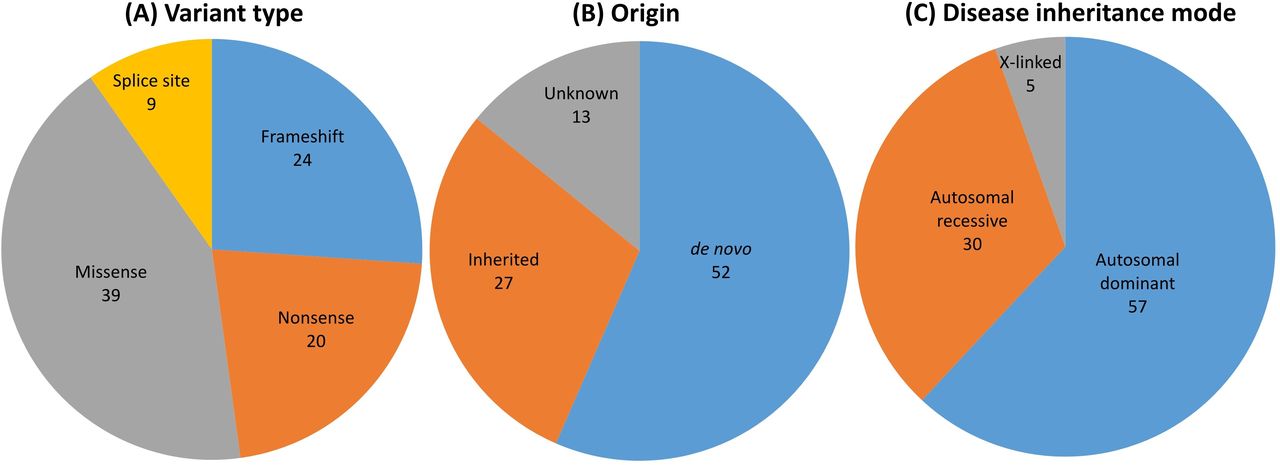Most often, SCID is inherited in an autosomal recessive pattern, in which both copies of a particular gene—one inherited from the mother and one from the father—contain defects.
Similarly, What is ADA deficiency?
Collapse Section. Adenosine deaminase (ADA) deficiency is an inherited disorder that damages the immune system and causes severe combined immunodeficiency (SCID). People with SCID lack virtually all immune protection from bacteria, viruses, and fungi.
Is SCID curable? The only cure currently and routinely available for SCID is bone marrow transplant, which provides a new immune system to the patient. Gene therapy treatment of SCID has also been successful in clinical trials, but not without complications.
Thereof, What is the survival rate of SCID?
Survival
SCID was first treated successfully with allogeneic HCT nearly 50 years ago. Over time, the 5-year overall survival has improved from 56% in patients treated prior to 1995, to currently greater than 70% and depending on donor and age at diagnosis, better than 90% [7,8].
What is the treatment for SCID?
The most common treatment for SCID is an allogeneic bone marrow transplant, which will introduce normal infection-fighting cells into your child’s body. Allogeneic transplants use stem cells from a relative or an unrelated donor from the National Marrow Donor Program.
What is ADA deficiency how it can be cured?
Lymphocytes are an important part of the immune system and help protect the body from infections. The adenosine deaminase (ADA) deficiency in human can be cured by various means: Bone marrow transplantation. Enzyme replacement therapy (function ADA enzyme is injected into the patient)
How do you cure ADA?
Although it doesn’t cure the disease, enzyme replacement therapy (ERT) may help your immune system work better and prevent infections. In this therapy, you get injections of healthy enzymes, usually from a cow. The only way to cure ADA-SCID is with a stem cell transplant.
How is ADA deficiency cured?
Currently, the most effective treatment is transplantation of blood-forming stem cells from the bone marrow of a healthy brother or sister of the person with ADA deficiency.
Can you live with SCID?
« If we can identify children with SCID at birth, we can save more lives. When we transplant these babies prior to the onset of infections, 94 percent survive. But if they are older or if they have already developed an infection, only 71 percent will live. »
Is SCID contagious?
SCID is not contagious. You cannot get SCID from living with, touching, or spending time with someone who has SCID.
What happens if you have SCID?
SCID is a very rare disease that can be deadly. It causes a child to have a very weak immune system. As a result, the child is unable to fight off even mild infections. The disease is also known as the “living in the bubble” syndrome because living in a normal environment can be fatal to a child who has it.
Can you live with SCID?
What are the survival rates for SCID? Without treatment, infants with SCID usually die from infections within the first two years of life. With an early bone marrow transplant, frequent follow-up and prompt treatment for infections, survival rates are very good.
Does bone marrow transplant cure SCID?
BMT, also known as a bone marrow transplant or blood stem cell transplant, is the only known cure for SCID. It replaces the unhealthy immune system with a healthy one. Allogeneic transplant is used for SCID.
What is SCID autoimmune disease?
Overview. Severe Combined Immunodeficiency (SCID, pronounced “skid”) is a serious primary immunodeficiency disease (PI) in which there is combined absence of T lymphocyte and B lymphocyte function. SCID is fatal without a stem cell transplant or corrective gene therapy.
How do you recover from SCID?
Currently, the only known treatment is a bone marrow transplant (BMT), which can restore the body’s ability to produce those crucial infection-fighting cells. (Bone marrow produces new blood cells.) Without a BMT, most children with SCID die before they reach the age of 2.
When is a patient with defective ADA treated?
ADA deficiency is also called as Adenosine deaminase deficiency. It is an autosomal recessive disorder that causes the immunodeficiency. Treatment includes gene therapy. In this, lymphocytes from the blood of the patient are grown in a culture in vitro.
How common is ADA deficiency?
Adenosine deaminase (ADA) is a key enzyme of the purine salvage pathways and deficiency caused by mutations in the ADA gene results in one of the more common causes of autosomal recessive severe combined immunodeficiency (SCID), accounting for approximately 10–15% of cases in outbred populations [1].
Why is ADA High in TB?
Adenosine deaminase (ADA) has been developed and widely used for the diagnosis of TB. ADA is an enzyme that increases in TB because of the stimulation of T-cell lymphocytes by mycobacterial antigens.
Is ADA deficiency fatal?
Without therapeutic intervention, ADA deficiency has a fatal course due to severe and overwhelming infections and most patients will die within the first year of life (1, 7). Late onset forms are also known, although the manifestations appear to be milder.
Can kids with SCID go to school?
Both doctors agreed that masks are essential for a safe return to school. Therefore, schools not requiring masks would influence their decision to recommend that a child treated for SCID attend school in person.
Can adults have SCID?
According to the World Health Organization, there are more than 200 of these sometimes life-altering or life-threatening inherited defects – some are relatively rare, some are quite common. Primary immune deficiency disease affect many thousands of children and adults in the U.S.
Is SCID autoimmune disease?
Severe combined immunodeficiency (SCID) is the most severe form of immunodeficiency and is also on occasion associated with autoimmune phenomena, usually in the form of the Omenn’s Syndrome phenotype.
Join TheMoney.co community and don’t forget to share this post !





